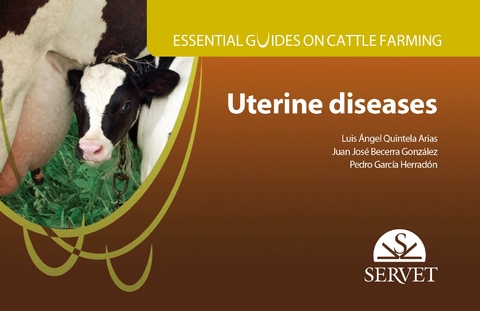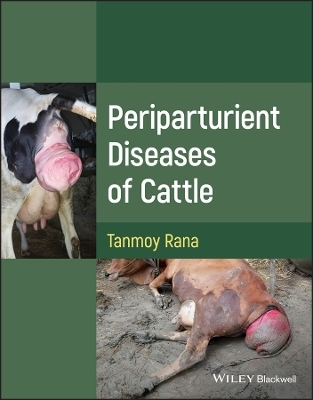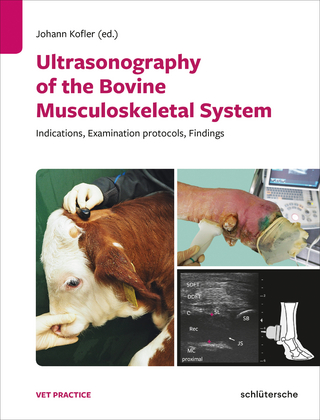
Uterine diseases
Servet Publishing (Verlag)
978-84-16315-53-6 (ISBN)
- Titel ist leider vergriffen;
keine Neuauflage - Artikel merken
Luis Ángel Quintela; Professor at the Department of Animal Pathology of the Faculty of Veterinary Medicine of Lugo, University of Santiago de Compostela (USC). Degree in Veterinary Medicine in 1989 and PhD in 1996 from the USC. He teaches Reproduction and Obstaetrics, Veterinary Clinical Ultrasonography and Dairy Cattle Medicine to undergraduate veterinary students, and Ultrasonography Applied to Cattle Reproduction to master’s degree students. Member of the Spanish Association for Animal Reproduction (AERA) and Spanish Association of Specialists in Bovine Medicine (ANEMBE). Consultant in reproduction for a pharmaceutical company since 2007. He has participated in or directed different research projects and collaborated with the R&D departments of several pharmaceutical companies. He is the author/co-author of more than 90 articles published in scientific journals and magazines, more than 120 papers for Spanish and international congresses, four books or chapters of books and a licensed patent. Most of these works were published in the field of cattle reproduction.
Juan José Becerra; Professor at the Department of Animal Pathology of the Faculty of Veterinary Medicine of Lugo, University of Santiago de Compostela (USC). Degree in Veterinary Medicine in 1990 and PhD in 2003 from the USC. 14 years of experience as a veterinary practitioner in the field of cattle reproduction. Professor of Reproduction and Obstaetrics since 1995. Member of the Spanish Association for Animal Reproduction (AERA). He has participated in numerous research projects. He is the author/co-author of more than 90 articles published in scientific journals and magazines and more than 120 papers for Spanish and international congresses. He has participated in the writing of five books or chapters of books and is also the co-author of a licensed patent. Most of his work has focused on cattle reproduction.
Pedro García Herradón; Professor at the Department of Animal Pathology of the Faculty of Veterinary Medicine of Lugo, University of Santiago de Compostela (USC). Degree in Veterinary Medicine in 1982 and PhD in 1988 from the University of León. He teaches Reproduction and Obstaetrics, Biotechnology of Animal Reproduction and Dairy Cattle Medicine to undergraduate veterinary students, and Biotechnology of Reproduction Applied to Domestic Animal Species to master’s degree students. He was a member of the Spanish Association for Animal Reproduction (AERA) Board of Directors and has directed numerous research projects. He is the author/co-author of more than 90 articles published in scientific journals and magazines, over 120 papers for Spanish and international congresses, six books or chapters of books and a licensed patent. Most of these works were published in the field of cattle reproduction.
Introduction
1. Structure of the uterus
Macroscopic anatomy of the uterus
Microscopic anatomy of the uterus
2. Defence mechanisms of the uterus
Anatomical barriers
Chemical barriers
Immune barrier
Endocrine regulation
Pathogenic agents
3. Classification
Clinical metritis
Endometritis
Clinical endometritis
Subclinical endometritis
Purulent vaginal discharge (PVD)
Cytological endometritis (CE)
Pyometra
4. Incidence
5. Diagnosis
Aspects to be considered in the diagnosis of metritis
Early diagnosis of metritis
Methods
Traditional methods
Ultrasonography
Cytology
Other methods
6. Predisposing factors
Factors that determine the magnitude of bacterial contamination
Factors that determine the capacity to eliminate bacterial contamination
7. Negative effects
8. Treatment
Metritis
Endometritis
Pyometra
9. Prevention
10. Conclusions
References
| Verlagsort | Zaragosa / Spanien |
|---|---|
| Sprache | englisch |
| Maße | 170 x 110 mm |
| Gewicht | 274 g |
| Einbandart | Spiralbindung |
| Themenwelt | Veterinärmedizin ► Großtier ► Rind |
| ISBN-10 | 84-16315-53-1 / 8416315531 |
| ISBN-13 | 978-84-16315-53-6 / 9788416315536 |
| Zustand | Neuware |
| Haben Sie eine Frage zum Produkt? |
aus dem Bereich


